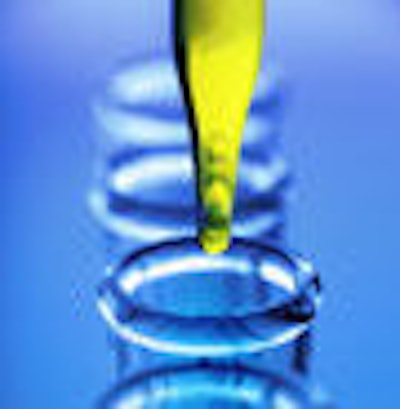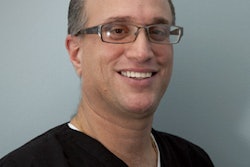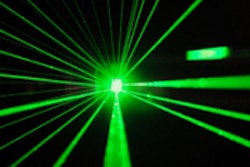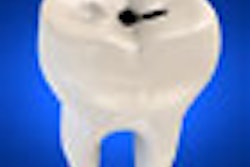
For Gregory Chotkowski, D.M.D., O.M.S., a retired oral surgeon whose son suffers from muscular dystrophy, the ability to harvest and preserve stem cells from the dental pulp of newly extracted teeth is a dream come true. So is being able to offer this same service to dentists and their patients.
That's the idea behind his company, StemSave. The Phoenix, AZ-based firm, which launched its dental stem cell extraction and storage service earlier this year, recently announced a partnership with Houston-based GMS Dental Centers of Excellence that will give dentists and patients at all five GMS centers affordable access to StemSave's stem cell extraction and cryopreservation services. For an initial registration fee of $590 and an annual $100 maintenance and storage fee, patients can have their dentists send newly extracted wisdom teeth, healthy permanent teeth, or baby teeth directly to StemSave, which handles all the shipping, processing, and cryo-preserving details. StemSave offers participating dentists $90 for administrating the service through their practice.
"As a practicing oral surgeon, I became aware of the fact that I was discarding healthy stem cells on a daily basis, and that people need access to these stem cells," Dr. Chotkowski said. "At StemSave, we allow people who are having oral surgery to decide whether they want to discard or bank these young, healthy stem cells for future regenerative purposes."
StemSave is not the only company that offers this type of service, although it does not focus just on baby teeth. Store-A-Tooth charges a $699 initiation fee and $120 a year, and Baby Tooth Technologies wants $189 to start plus $99 a month. Bioeden charges $595, then $89 a month.
StemSave has designed its service to be a seamless as possible for the dentists they partner with (about 200 in its first two months), according to Dr. Chotkowski. The company provides them with brochures that can be handed out to patients who are being considered for an extraction. If patients choose to enroll, they do so privately, online. StemSave then sends their dentist a recovery and transport kit that is available at the time of the extraction appointment.
Once the extraction takes place, all the dentist has to do is put the tooth (or teeth, up to 4) into the vial included in the kit. Pickup from the dentist office is automated, and the teeth are delivered to the lab within 48 hours. The vial has been engineered to keep the contents at room temperature during transport -- a critical factor in keeping the pulp alive, Dr. Chotkowski noted.
"When a tooth is removed from the oral cavity at 98.6°, it is placed into a vial that then goes inside a thermos containing a patented phase-change material that maintains the internal ambient environment of the thermos at room temperature, which induces hypothermia," he said. "The teeth will normalize to room temperature; we then have 48 hours to get from the dental office to our processing facility."
Once there, the tooth is cracked open and the pulp removed and viability tested to ensure it is still alive. The pulp is stored in liquid nitrogen at a facility that has been in the cryopreservation business for 25 years, according to Dr. Chotkowski. By contrast, Baby Tooth Technologies proposes to propagate dental stem cells, expanding the number without freezing them. Freezing and thawing damages the pulp, argues that company's director of dental science, Nicholas Perrotta, D.M.D.
"StemSave is registered with the FDA and we follow the FDA’s ‘Current Good Tissue Practice’ guidelines that cover the handling, processing, and cryopreservation of these tissues,” Dr. Chotkowski said. “It is all about minimal manipulation of the tissues and not introducing any enzymes or agents, which are necessary to expand the number of cells and may alter the properties of these cells. In addition to complying with current FDA guidelines, StemSave secures the cells in their natural state." Storing cells in liquid nitrogen makes it possible to preserve the stem cells indefinitely, he added.
This last point is important because, while medical research has repeatedly shown the potential for stem cells to enhance the treatment of a range of illnesses -- including Parkinson's disease, heart disease, diabetes, arthritis, osteoporosis, and multiple sclerosis -- the bulk of the research has involved stem cells from bone marrow and umbilical cord blood. Extracting stem cells from conventional sources such as bone marrow and umbilical cords has proved both painful and controversial, however.
Stem cell extraction from dental pulp offers a less invasive and less expensive approach, according to Dr. Chotkowski. The presence of stem cells in dental pulp was first discovered in 2000 by Dr. Songtao Shi and Dr. Stan Gronthos, then both with the National Institutes of Health (Proceedings of the National Academy of Sciences, December 5, 2000, Vol. 97:25, pp. 13625-13630). Subsequent studies have focused primarily on cell differentiation and proving the viability of these cells for regenerative applications (New York State Dental Journal, March 2008, Vol. 74:2, pp. 20-24; Journal of Dental Research, November, 2006, Vol. 85:11, pp. 966-979).
While these and related studies have illustrated the unique properties of dental stem cells, the field is not without its own controversies. Stem cell experts point out that the stem cells found in dental pulp are quite different from those found in bone marrow or umbilical cord blood. The bulk of the research that has been done on stem cells and their applications since the 1960s has focused on hematopoietic and other stem cells, which are responsible for the formation of many tissues from the neck down. Today these cells can be used to treat some 70 different diseases.
The stem cells that can be extracted from dental pulp, however, are mesenchymal stem cells derived from neuroectoderm, and they form most structures from the neck up. Research into the potential applications for these cells has so far demonstrated that they can be differentiated into bone, nerve, and cartilage cells, which means they have the potential to be used in regenerating these tissues. However, there has been little clinical research into the true potential for these cells in treating diseases involving these tissues.
For example, while it has been demonstrated that dental pulp stem cells come from the same embryonic cell layer as nerve cells (Journal of Oral and Maxillofacial Surgery, September 2007, Vol. 65:9, pp: 40.e1-40.e2), which means they could theoretically generate nerve cells, "we still do not know if they can truly function as nerve cells, and this is a huge question that needs to be answered," said Pamela Gehron Robey, Ph.D., chief of the Craniofacial and Skeletal Diseases Branch of the National Institute of Dental and Craniofacial Research of the National Institutes of Health.
"I am in very strong support of the scientific and preclinical research that has been done in this, [but] to date there has been no demonstration that these cells have a therapeutic value for anything other than making dentin and pulp," she added. "Nothing has shown that they have a therapeutic effect on treating any disorders. So we can't say whether this is a good thing or a bad thing because we don't have the evidence yet. These companies are pulling on the heartstrings of parents."
Jeremy Mao, D.D.S, Ph.D., a professor and director of the Tissue Engineering and Regenerative Medicine Laboratory at Columbia University and a member of StemSave's scientific advisory board, believes that while more clinical research and differentiation studies involving dental stem cells are needed, there is a great deal of potential for utilizing these stem cells down the road.
"Differentiation of a stem cell into a particular cell type is the first step in the potential cure for a disease of the tissue or organ the cell is derived from," Dr. Mao said. "While today no one has demonstrated that these cells can lead to a cure of cartilage-related disease, for example, I would project that the potential of dental stem cells is not necessarily limited to nerve and bone."
"We are not promoting this as the ability to treat diseases today," Dr. Chotkowski added. "Given the rapid pace of stem cell research, we are providing an affordable service for patients to bank their own stem cells. In terms of the future of medicine, particularly personalized medicine, to have access to these stem cells in an affordable way is a tremendous offering."



















